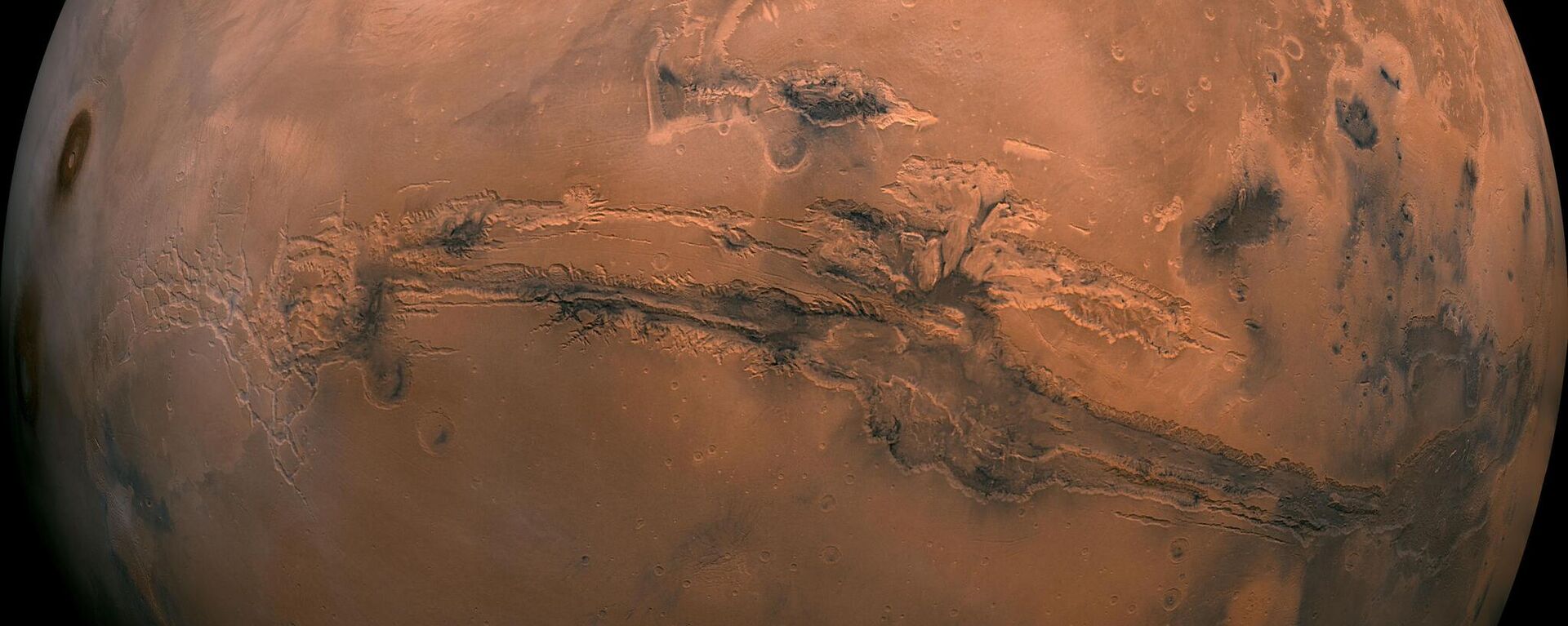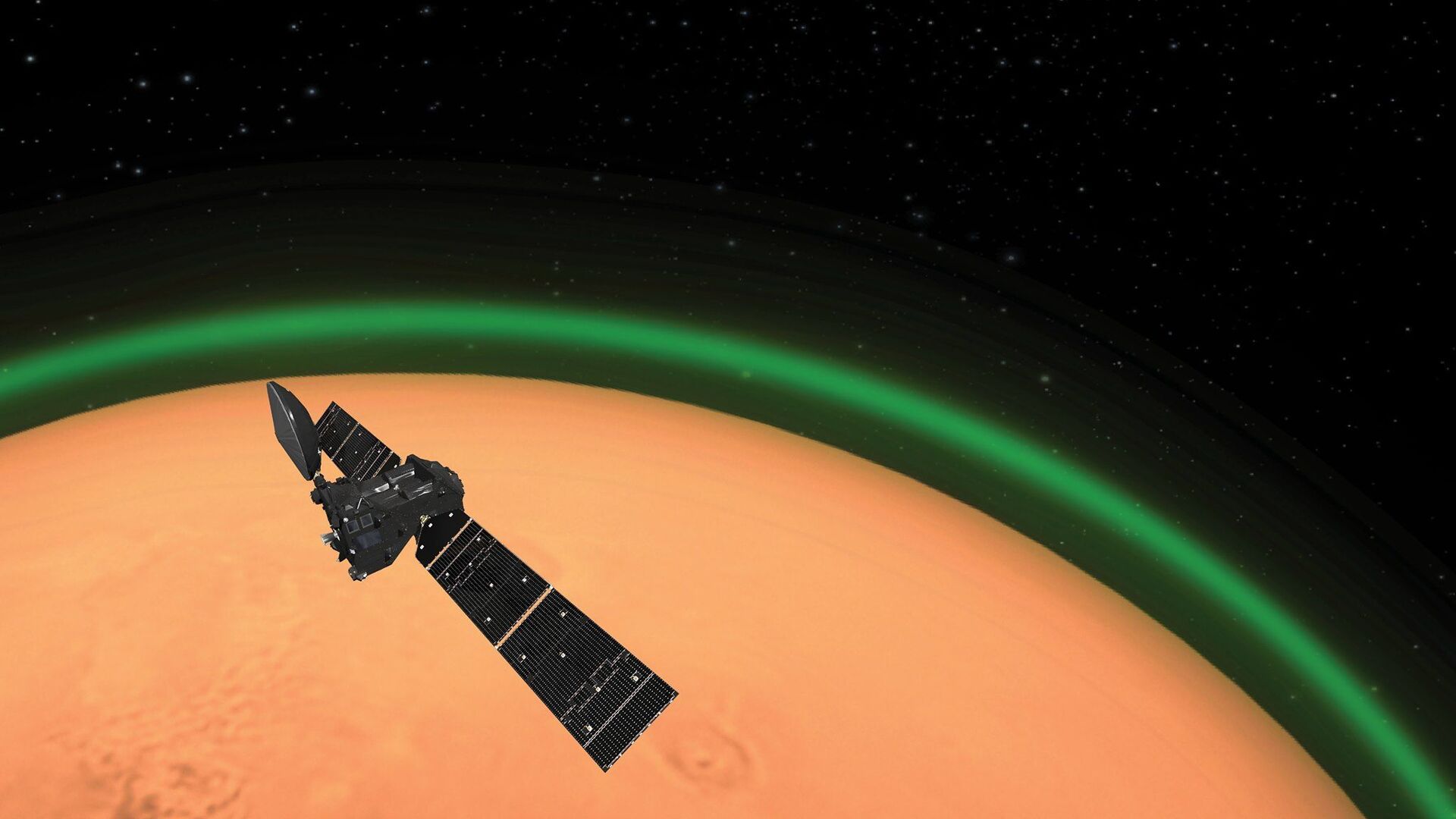https://sputnikglobe.com/20231119/red-planet-green-glow-light-emission-phenomenon-spotted-in-martian-sky-1115055995.html
Red Planet, Green Glow: Light Emission Phenomenon Spotted in Martian Sky
Red Planet, Green Glow: Light Emission Phenomenon Spotted in Martian Sky
Sputnik International
Nightglow, also known as airglow, is essentially an emission of light by a planet’s atmosphere. In Mars’ case, this emission occurs “due to the recombination of oxygen atoms created in the summer atmosphere and transported by winds to high winter latitudes, at altitudes of 40 to 60 km.”
2023-11-19T14:01+0000
2023-11-19T14:01+0000
2023-11-19T14:01+0000
beyond politics
science & tech
mars
atmosphere
light
airglow
https://cdn1.img.sputnikglobe.com/img/107963/48/1079634813_0:0:2048:1152_1920x0_80_0_0_79537cfcb1ecb9f0664cc5b01bc2fc7d.jpg
The Trace Gas Orbiter spacecraft that has been orbiting Mars for several years has detected a green nightglow in the Red Planet's atmosphere via the onboard Nadir and Occultation for Mars Discovery (NOMAD) spectrometer.Nightglow, also known as airglow, is essentially an emission of light by a planet’s atmosphere.In Mars’ case, this emission occurs “due to the recombination of oxygen atoms created in the summer atmosphere and transported by winds to high winter latitudes, at altitudes of 40 to 60 km,” according to Lauriane Soret, one of the authors of the study on the subject that has been published in the journal Nature Astronomy last week.According to a statement shared on the European Space Agency’s website, the nightglow “serves as a tracer of atmospheric processes” and “can provide a wealth of information about the composition and dynamics of a region of the atmosphere difficult to measure, as well as the oxygen density." It can also help determine “how energy is deposited by both the Sun’s light and the solar wind.”
https://sputnikglobe.com/20231018/scientists-discover-surprising-cause-of-mars-record-breaking-quake-1114274188.html
mars
Sputnik International
feedback@sputniknews.com
+74956456601
MIA „Rossiya Segodnya“
2023
Sputnik International
feedback@sputniknews.com
+74956456601
MIA „Rossiya Segodnya“
News
en_EN
Sputnik International
feedback@sputniknews.com
+74956456601
MIA „Rossiya Segodnya“
Sputnik International
feedback@sputniknews.com
+74956456601
MIA „Rossiya Segodnya“
mars atmosphere, mars night sky, trace gas orbiter
mars atmosphere, mars night sky, trace gas orbiter
Red Planet, Green Glow: Light Emission Phenomenon Spotted in Martian Sky
A peculiar atmospheric effect that can be observed on Earth has been spotted on Mars, according to a new study published earlier this month.
The Trace Gas Orbiter spacecraft that has been orbiting Mars for several years has detected a green nightglow in the Red Planet's atmosphere via the onboard Nadir and Occultation for Mars Discovery (NOMAD) spectrometer.
Nightglow, also known as airglow, is essentially an emission of light by a planet’s atmosphere.
In Mars’ case, this emission occurs “due to the recombination of oxygen atoms created in the summer atmosphere and transported by winds to high winter latitudes, at altitudes of 40 to 60 km,” according to Lauriane Soret, one of the authors of the study on the subject that has been published in the journal Nature Astronomy last week.
“This O2 nightglow should be observable from a Martian orbiter as well as from the Martian surface with the naked eye under clear sky conditions,” the researchers wrote, adding that “these observations pave the way to future global observations of the Martian atmospheric circulation with simpler lower-cost instrumentation.”

18 October 2023, 02:58 GMT
According to a statement shared on the European Space Agency’s website, the nightglow “serves as a tracer of atmospheric processes” and “can provide a wealth of information about the composition and dynamics of a region of the atmosphere difficult to measure, as well as the oxygen density." It can also help determine “how energy is deposited by both the Sun’s light and the solar wind.”



